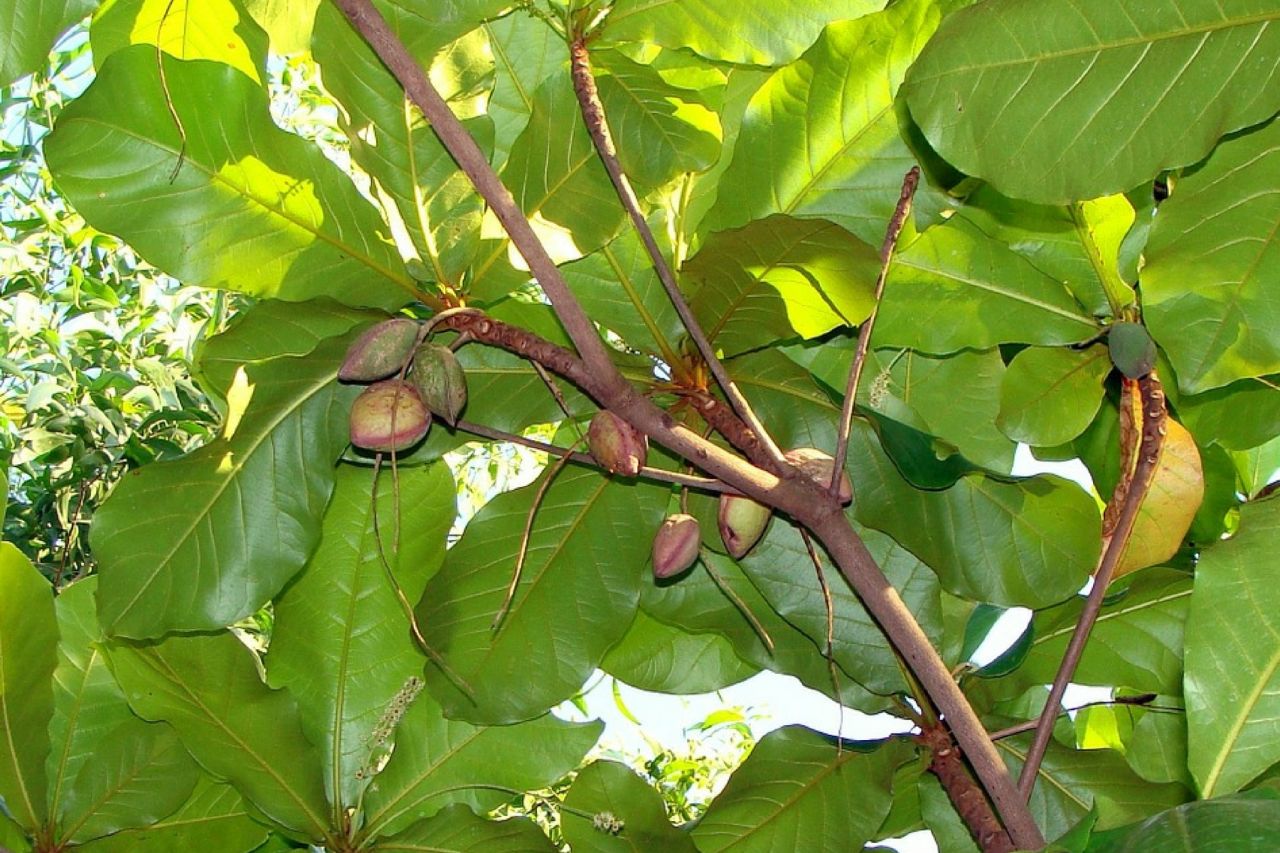Planting Tropical Almond
- Indoors in a Large Container: Use a spacious container to accommodate growth. Rotate the plant periodically for even foliage development. This method is particularly suitable for those with limited outdoor space.
- Outdoors in a Pot: While tropical almond thrives outside, they may not reach full size. Choose a large pot and protect it from strong winds. Additionally, ensure proper drainage to prevent waterlogged soil.
- Outdoors in the Ground: Plant in a sunny spot, allowing room for expansive roots. Avoid placing it too close to structures because the roots can disrupt them. Consider adding organic compost to enrich the soil and promote healthy growth.

Watering Tropical Almond
- Watering Schedule: Every 1-2 weeks.
- Humidity Level: Moderate.
- Tropical almond requires consistent humidity. It is moderately drought-tolerant and sheds leaves during the dormant season. Adapted to seasonal rainfall patterns, it remains resilient during dry spells. Remember to water deeply, allowing the soil to absorb moisture thoroughly.
- Additional Tip: Consider using a humidity tray or misting the leaves to maintain optimal humidity levels indoors.
Sunlight Requirements
- Full Sun: Tropical almond thrives in full sun, promoting vigorous growth and optimal health. Ensure it receives at least 6-8 hours of direct sunlight daily.
- Partial Sun Tolerance: While adaptable, deviating too far from full sun exposure can affect growth rates. Broad leaves regulate light absorption. If planting in a partially shaded area, monitor its growth and adjust as needed.
- Additional Tip: Regularly inspect the foliage for sunburn or inadequate light. Adjust its position accordingly.
Fertilizing Tropical Almond
- Use high nitrogen fertilizer for lush foliage growth.
- Apply a balanced, slow-release product in spring and mid-summer.
- Adjust amounts during active growth and reduce in the dormant season to prevent nutrient run-off.
- Additional Tip: Consider incorporating organic matter, such as compost or well-rotted manure, to enhance soil fertility naturally.
Propagation
- Propagation Time: Winter.
- Methods: Hardwood cuttings, layering (air), and sowing seeds.
- Ensure healthy cuttings or seeds and use a well-draining soil mix. Label each propagated plant to track its progress.
- Additional Tip: When propagating from seeds, scarify them gently or soak them overnight to improve germination rates.
The tropical almond is a versatile plant that adapts well to its environment, making it an excellent addition to any garden or landscape. By following these care guidelines, you can enjoy its beauty and benefits throughout the seasons. Remember to observe your tropical almond closely, adjusting care practices to ensure its thriving growth.


